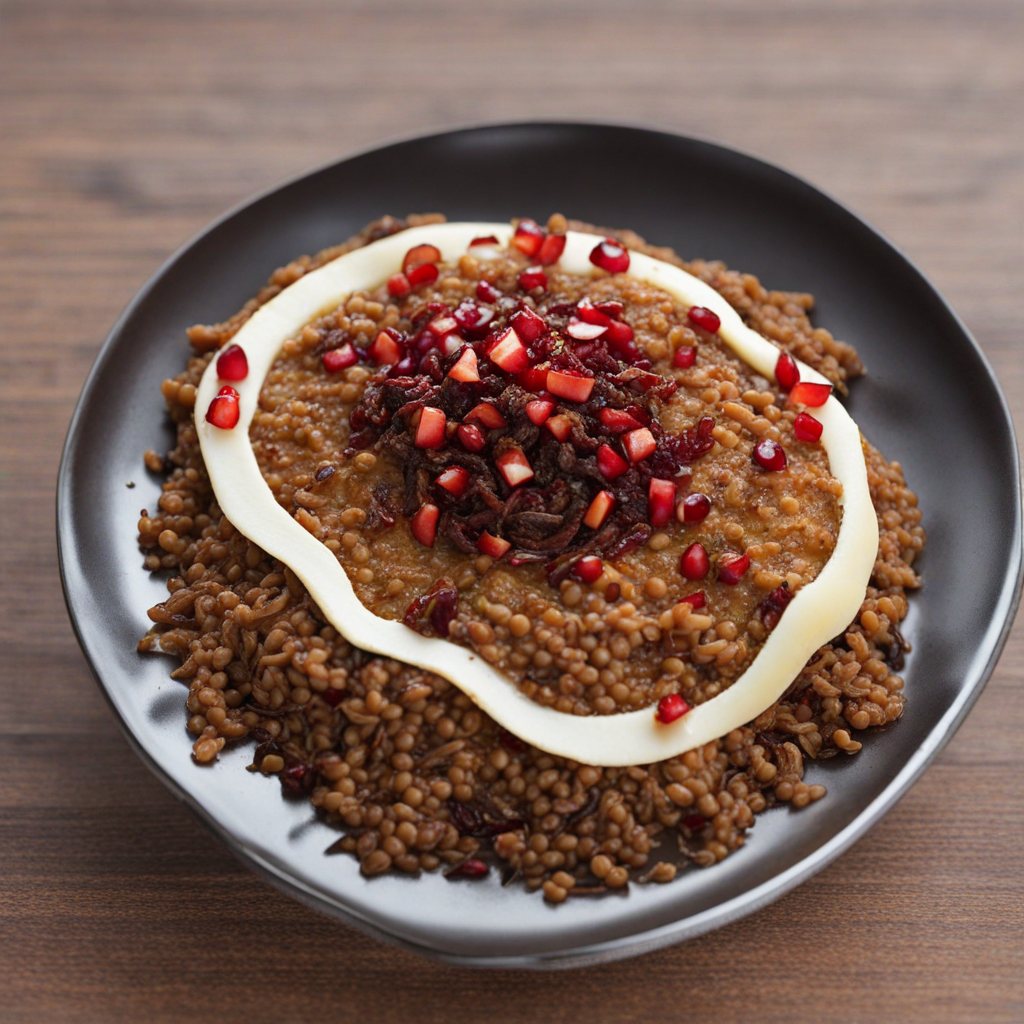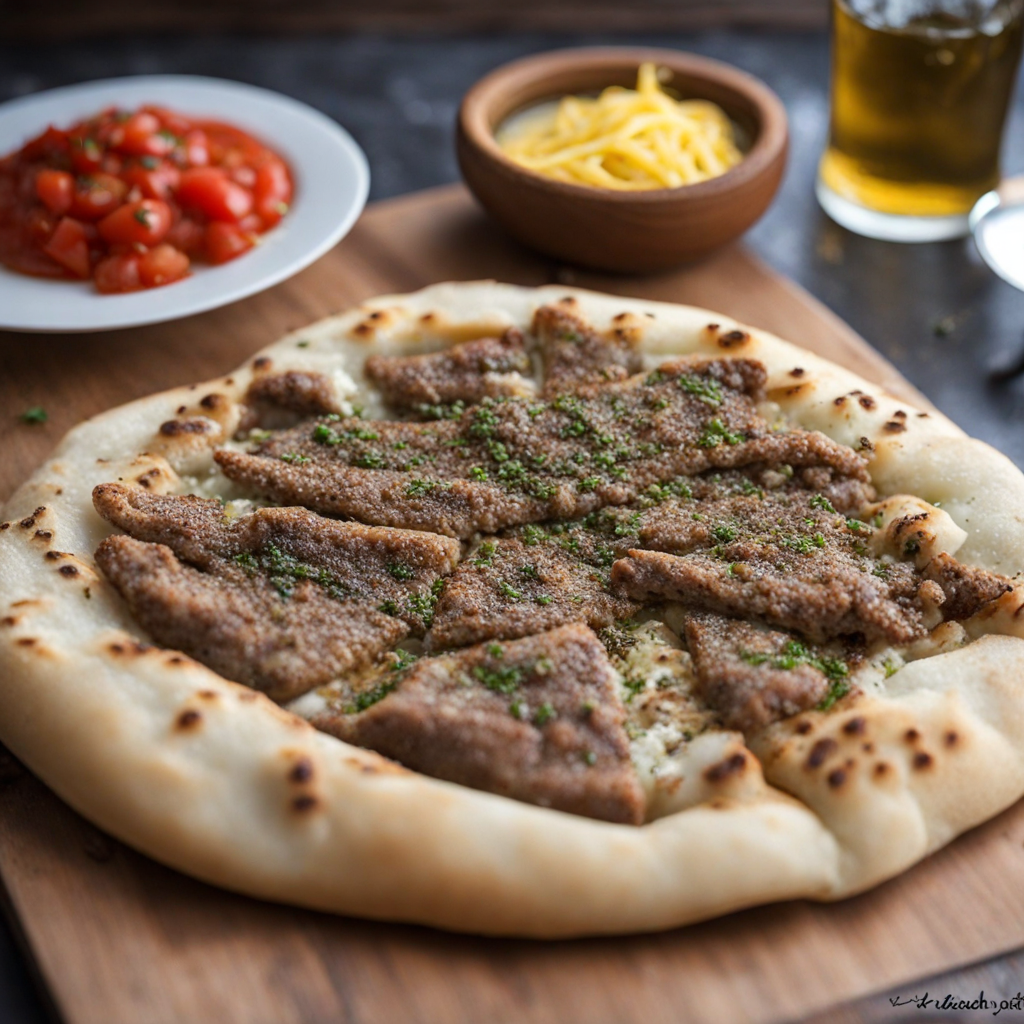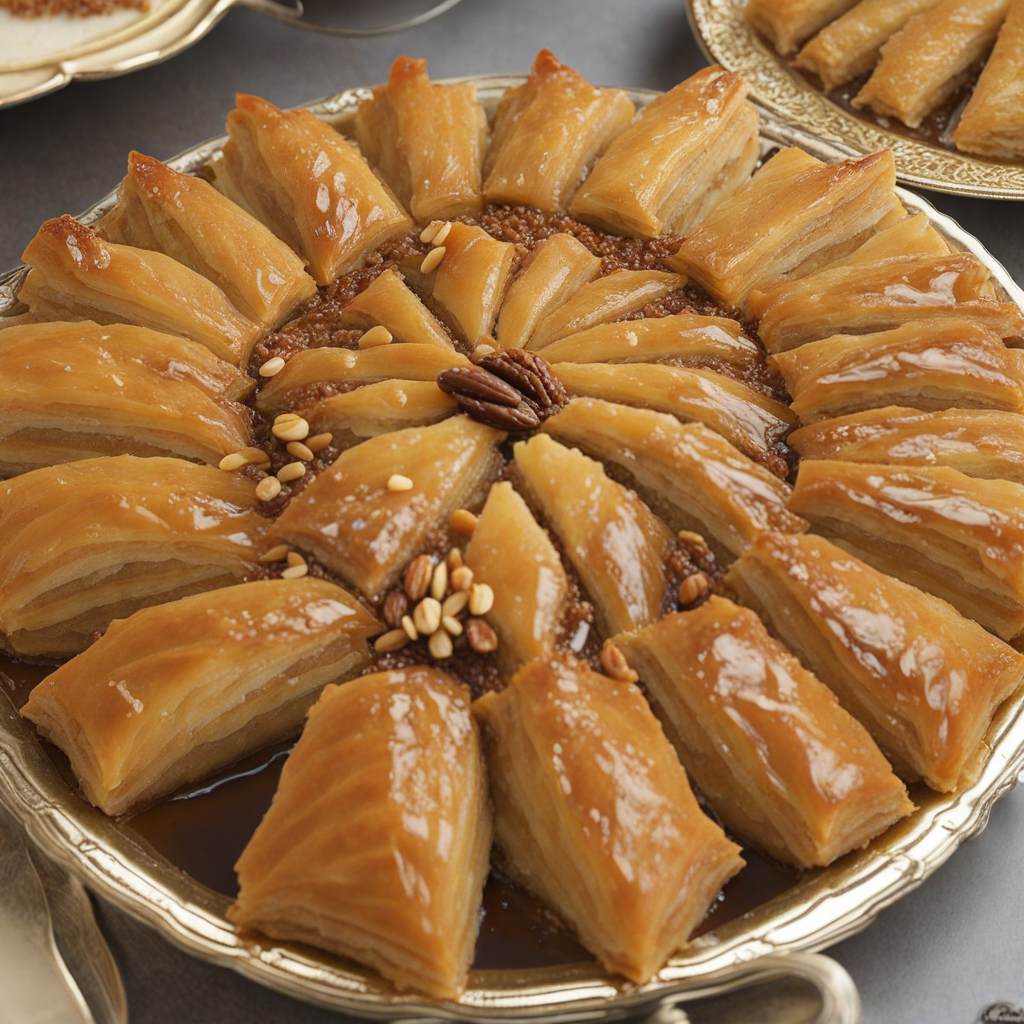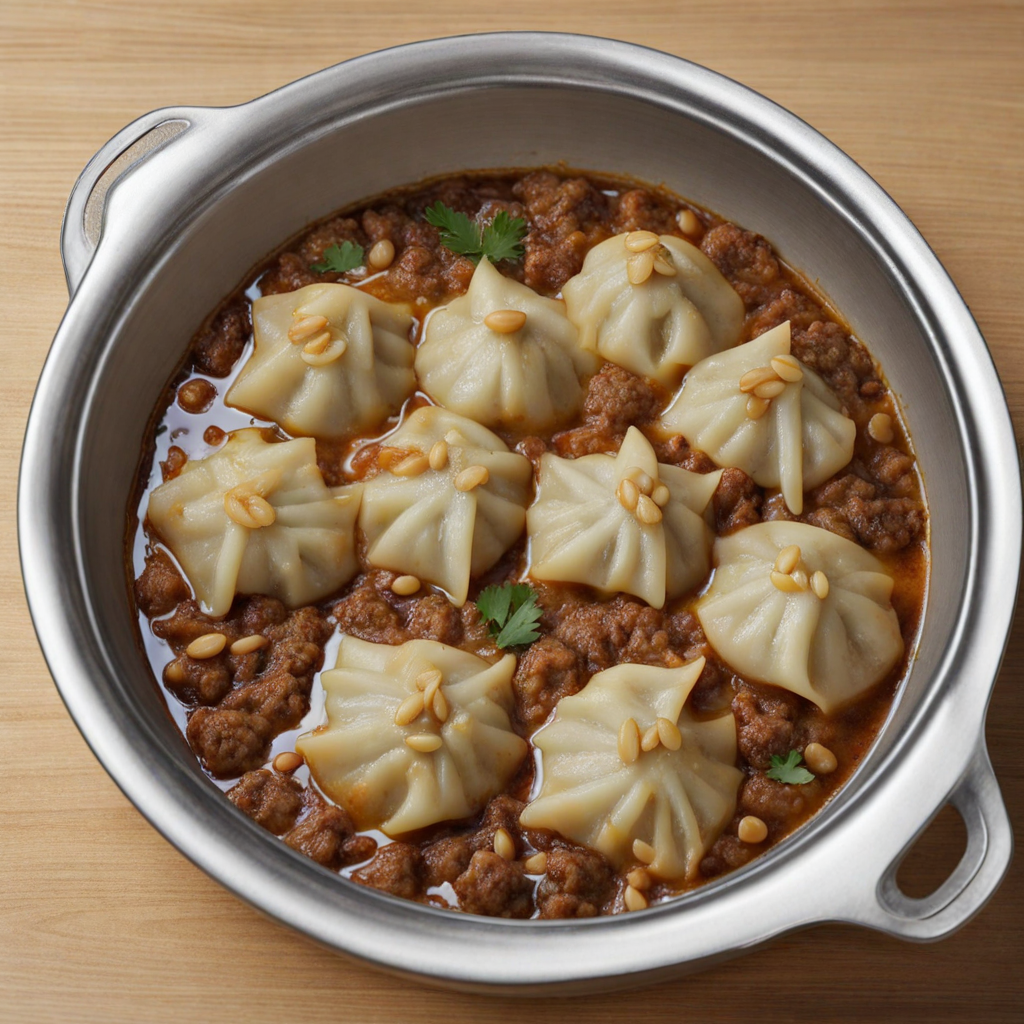Barazek
Barazek are traditional Syrian cookies that perfectly embody the rich flavors and textures of Middle Eastern cuisine. These delightful treats are made from a simple yet harmonious blend of ingredients, primarily flour, sugar, and butter, which create a tender and slightly crumbly texture. What sets Barazek apart is their generous coating of sesame seeds, which not only adds a delightful crunch but also imparts a nutty flavor that complements the sweetness of the cookie. Often enjoyed with a cup of tea or coffee, they are a popular snack in Syrian households and are often served during festive occasions and gatherings. These cookies can be found in various sizes and shapes, with some bakers even incorporating spices like cardamom or cinnamon to enhance the flavor profile. The preparation is quite straightforward, involving the rolling of dough into small balls that are then flattened and rolled in sesame seeds. Upon baking, they develop a golden-brown exterior, while the inside remains soft and slightly chewy, making each bite a delightful experience. Barazek not only satisfy the sweet tooth but also offer a glimpse into Syrian culture and hospitality. They are often gifted to friends and family during holidays, symbolizing love and community. The blend of textures—the crunch of the sesame seeds with the softness of the cookie—creates a taste sensation that is both comforting and exotic, making Barazek a must-try for anyone looking to explore the diverse and rich flavors of Syrian cuisine.
How It Became This Dish
The History of برازق (Barazek): A Sweet Journey from Syria #### Origins Barazek, a beloved Syrian pastry, is a delightful confection that has woven itself into the fabric of Middle Eastern culinary traditions. The word "Barazek" is derived from the Arabic word for "seeds," which is fitting given the pastry's signature topping of sesame seeds. The origins of Barazek can be traced back to ancient times, with roots deeply embedded in the Levant region, particularly in Syria. Historically, the Levant has been a crossroads of cultures, where trade routes brought together diverse peoples and their culinary practices. The use of sesame seeds can be traced back to ancient Mesopotamia, where they were cultivated and used both for their oil and as a food source. As the tradition of baking evolved, so did the incorporation of these seeds into various pastries, leading to what we now recognize as Barazek. #### Cultural Significance Barazek is more than just a sweet treat; it symbolizes hospitality and generosity in Syrian culture. Often served during family gatherings, festive occasions, or as a welcome gift for guests, Barazek embodies the warmth and kindness that are hallmarks of Syrian society. The act of sharing food, particularly sweets, is an integral part of social interactions, and Barazek holds a special place in these traditions. During religious celebrations, such as Eid al-Fitr and Eid al-Adha, Barazek is a common offering. The pastry is often accompanied by Arabic coffee, creating a delightful pairing that enhances both the flavor and the social experience. In this context, Barazek becomes a vessel for community bonding, allowing families and friends to come together in celebration. #### Ingredients and Preparation The traditional Barazek recipe features simple yet high-quality ingredients: flour, sugar, butter, and sesame seeds. The dough is typically enriched with ghee or butter, providing a rich, flaky texture. The preparation involves rolling the dough into small balls, flattening them, and then pressing sesame seeds onto the surface before baking. While the basic recipe has remained largely unchanged, variations have emerged in different regions. Some recipes incorporate spices such as cardamom or cinnamon, while others might add a hint of orange blossom water for fragrance. The flexibility of the recipe allows for regional adaptations and personal touches, further enriching its history. #### Development Over Time As the centuries progressed, Barazek evolved alongside the cultural and political changes in the region. The Ottoman Empire, which ruled over Syria for several centuries, influenced many culinary traditions, including the preparation of sweets. The introduction of new ingredients and techniques during this period contributed to the refinement of Barazek, making it more than just a simple pastry. In the 19th and early 20th centuries, with the spread of Syrian immigrants around the world, Barazek began to gain international recognition. Syrian diaspora communities in countries such as the United States, Canada, and Australia brought their culinary heritage with them, introducing Barazek to new audiences. Bakeries specializing in Middle Eastern sweets began to emerge, and Barazek quickly became a staple in these establishments, often alongside other traditional pastries like Maamoul and Knafeh. The popularity of Barazek continued to grow, particularly in the latter half of the 20th century. As globalization accelerated, so did the exchange of culinary ideas. Barazek found its way into mainstream culture, often featured in food festivals and cultural celebrations, showcasing the richness of Syrian cuisine. #### Modern Times and Globalization In recent years, Barazek has experienced a renaissance, particularly amid the Syrian civil war that began in 2011. As the conflict displaced millions and brought attention to the plight of Syrian refugees, there has been a renewed interest in preserving and celebrating Syrian culture, including its culinary traditions. Food has become a form of resistance and resilience, with Barazek standing as a symbol of home and identity for many displaced Syrians. Culinary initiatives, cookbooks, and social media platforms have played a crucial role in popularizing Barazek beyond the Middle Eastern community. Food bloggers and chefs have shared their interpretations of the recipe, often incorporating modern twists while respecting traditional methods. This blend of old and new has allowed Barazek to maintain its cultural significance while adapting to contemporary tastes. #### Barazek in the Global Culinary Scene As Barazek continues to gain popularity, it has found a place in various culinary contexts. Gourmet cafes and bakeries in major cities around the world now offer Barazek alongside other international pastries, highlighting its versatility and appeal. The pastry's simplicity, combined with its rich flavor and cultural heritage, makes it a favorite among food enthusiasts and casual consumers alike. Moreover, Barazek has inspired a range of fusion desserts, incorporating elements from different culinary traditions. For example, some chefs have experimented with chocolate-covered Barazek or variations that include nuts like pistachios or walnuts, further expanding its reach and influence in global cuisine. #### Conclusion Barazek is more than just a pastry; it is a testament to the resilience of a culture and its ability to adapt and thrive through changing times. Its rich history is intertwined with the stories of the people who have cherished it, making it a symbol of hospitality, community, and identity. From its ancient origins to its modern-day popularity, Barazek represents the enduring legacy of Syrian culinary traditions and their capacity to connect people across borders. As we savor the sweet, nutty flavor of Barazek, we are reminded of the rich tapestry of history and culture that it embodies. It is a delicious invitation to explore the culinary heritage of Syria while celebrating the universal joy of sharing food with others. Whether enjoyed at a family gathering or discovered in a bustling bakery across the globe, Barazek continues to delight and inspire, bridging the past and the present with every bite.
You may like
Discover local flavors from Syria







